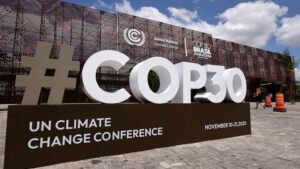
A group of international experts led by Project Drawdown has called for a “people-first” approach to addressing global challenges such as poverty, biodiversity loss, and climate change — urging policymakers to prioritize human well-being as the foundation for lasting environmental and climate action.
In a commentary published in the journal One Earth, the team argues that existing resources can effectively ease human suffering and protect the planet if solutions focus first on meeting people’s needs.
“Poverty, biodiversity loss, and climate change are interwoven problems with interwoven solutions,” said Dr. Paul C. West, Project Drawdown’s Senior Scientist and lead author of the study. “To solve all three, we need to prioritize actions that meet people’s needs first, especially in rural areas of low-income countries where poverty and hunger are widespread. If that doesn’t happen, benefits for nature and climate are likely short-lived — and it’s just the right thing to do.”
The paper, titled “A People-First Approach to Achieving Global Climate and Nature Goals,” was co-authored by 14 experts from organizations across Bangladesh, Canada, Mozambique, Myanmar, Nigeria, Senegal, Singapore, and the United States.
The authors noted that current global strategies tend to focus on climate and biodiversity goals while treating human well-being as secondary — a key reason why progress on the United Nations Sustainable Development Goals (SDGs) has stalled. With over one million species facing extinction and climate impacts worsening, they argue, a paradigm shift is urgently needed.
Read Also: How climate change ignites wildfires
Their proposed “people-first approach” emphasizes identifying technologies and practices that benefit people, biodiversity, and climate simultaneously — but with priority given to actions that improve lives immediately.
Practical examples include:
Village-scale solar projects, which enhance quality of life while cutting emissions and reducing deforestation.
Supporting communities that protect intact ecosystems, thereby preserving biodiversity and carbon storage.
Safeguarding coastal mangroves, which protect livelihoods and food sources while offering climate and habitat benefits.
The experts also highlight the importance of targeting interventions where they can have the greatest impact. “Understanding where needs are highest and where solutions can be most effective can identify ‘hot spots’ or ‘leverage points’ to guide action and accelerate progress,” the commentary stated.
“By designing projects to meet people’s needs and prioritizing those at the nexus of human, climate, and nature goals, decision-makers and funders can deliver enduring results that don’t jeopardize human well-being — and therefore, their own success,” the authors concluded.








